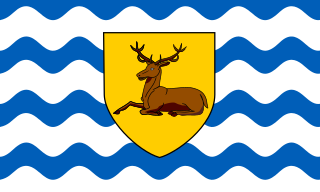
Hertfordshire is one of the home counties in southern England. It borders Bedfordshire and Cambridgeshire to the north, Essex to the east, Greater London to the south, and Buckinghamshire to the west. For government statistical purposes, it forms part of the East of England region.

St Albans is a cathedral city in Hertfordshire, England, east of Hemel Hempstead and west of Hatfield, 20 miles (32 km) north-west of London, 8 miles (13 km) south-west of Welwyn Garden City and 11 miles (18 km) south-east of Luton. St Albans was the first major town on the old Roman road of Watling Street for travellers heading north and became the city of Verulamium. It is within the London commuter belt and the Greater London Built-up Area.
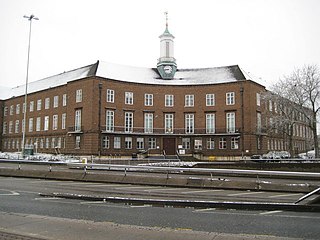
Watford is a town and borough in Hertfordshire, England, 15 mi (24 km) northwest of Central London, on the banks of the River Colne.

The City and District of St Albans is a local government district with city status in Hertfordshire, England. Its council is based in St Albans, the largest settlement in the district. The district also includes the town of Harpenden and several villages. The district borders North Hertfordshire, Welwyn Hatfield, Hertsmere, Watford, Three Rivers, Dacorum, and Central Bedfordshire.

Gazelle

Ware is a town in Hertfordshire, England close to the county town of Hertford. It is also a civil parish in East Hertfordshire district.

Hertfordshire is an English county, founded in the Norse–Saxon wars of the 9th century, and developed through commerce serving London. It is a land-locked county that was several times the seat of Parliament. From origins in brewing and papermaking, through aircraft manufacture, the county has developed a wider range of industry in which pharmaceuticals, financial services and film-making are prominent. Today, with a population slightly over 1 million, Hertfordshire services, industry and commerce dominate the economy, with fewer than 2000 people working in agriculture, forestry and fishing.

The Diocese of St Albans forms part of the Province of Canterbury in England and is part of the wider Church of England, in turn part of the worldwide Anglican Communion.

St Albans is a constituency represented in the House of Commons of the UK Parliament since 2019 by Daisy Cooper, a Liberal Democrat.

Inveraray Jail is a former prison and courthouse in Church Square, Inveraray, Argyll and Bute, Scotland. It was built in 1820 and is a Category A listed building. The prison closed in 1889 but the building remained in use as a courthouse until the mid-twentieth century, in which time it was also used for some meetings of Argyll County Council. Since 1989 it has been a museum.

The Liberty of St Albans was a liberty situated within Hertfordshire, but enjoying the powers of an independent county. It was originally associated with the abbey of St Albans, and later with the borough corporation. It was absorbed by Hertfordshire in 1874. It was also known as the Hundred of Cashio.
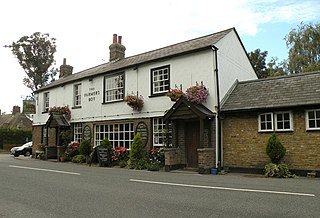
Brickendon is a village in the civil parish of Brickendon Liberty in the district of East Hertfordshire about 3 miles (4.8 km) south of the county town Hertford, and is served by Bayford railway station.
Hertfordshire was a county constituency covering the county of Hertfordshire in England. It returned two Knights of the Shire to the House of Commons of England until 1707, then to the House of Commons of Great Britain until 1800, and to the House of Commons of the Parliament of the United Kingdom from 1800 until 1832. The Reform Act 1832 gave the county a third seat with effect from the 1832 general election.

The Shire Hall is a municipal building in Fore Street, Hertford, the county town of Hertfordshire, England. The building, which currently serves as a Magistrates' Court, is a Grade I listed building.

Gloucester Crown Court is a Crown Court venue which deals with criminal cases at Bearland, Gloucester, England. The court, which is located at the back of Gloucester Shire Hall, is a grade II listed building.
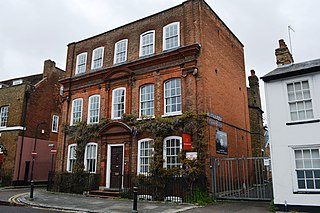
Yeomanry House is a military installation in Hertford. It is a Grade II* listed building.

Bourne Town Hall is a municipal building in North Street, Bourne, Lincolnshire, England. The town hall, which was the headquarters of Bourne Urban District Council, is a Grade II listed building.
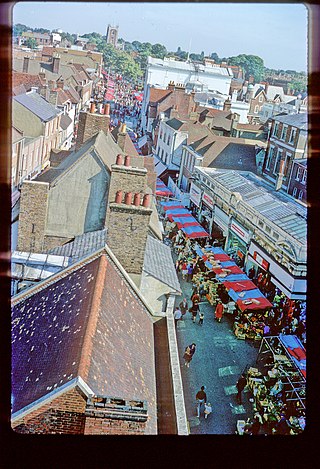
St Albans Market is an outdoor street market in the cathedral city and market town of St Albans. The market runs from Market Place North-East up St Peter's Street to the junction with Catherine Street and is managed by St Albans City and District Council.

The Sessions House is a judicial structure in Toft Road, Knutsford, Cheshire, England. The structure, which used to be the main courthouse for the eastern part of the county of Cheshire, is a Grade II* listed building.

The Moot Hall is a former municipal building in the Market Place in St Albans, Hertfordshire, England. The building, which now operates as two shops with office space above, is a Grade II listed building.




















